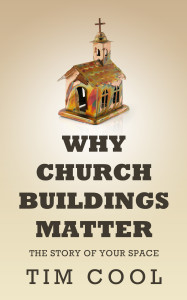Storytelling embodies an approach that is well adapted to meet the deep challenges of leadership. Situations in which story impacts people across an organization include:
- Persuading them to adopt an unfamiliar new idea
- Charting a future course
- Attracting the best talent
- Instilling passion and discipline
- Aligning individuals to work together
- Calling everyone to continue believing in leadership through the unpredictable ups and downs
The underlying reason for the affinity between leadership and storytelling is simple: narrative, unlike abstraction and analysis, is inherently collaborative.
Storytelling helps leaders work with other individuals as co-participants, not merely as objects or underlings. Storytelling helps strengthen leaders’ connections with the world.
After all, isn’t this what all leaders need – a connection with people they are seeking to lead?
“The mistake people make is thinking the story is just about marketing. No, the story is the strategy. If you make your story better you make the strategy better.”
– Ben Horowitz
THE QUICK SUMMARY – Story Driven by Bernadette Jiwa
Every one of us—regardless of where we were born, how we were brought up, how many setbacks we’ve endured or privileges we’ve been afforded—has been conditioned to compete to win. Ironically, the people who create fulfilling lives and careers—the ones we respect, admire and try to emulate—choose an alternative path to success. They have a powerful sense of identity. They don’t worry about differentiating themselves from the competition or obsess about telling the right story. They tell the real story instead. Successful organizations and the people who create, build and lead them don’t feel the need to compete, because they know who they are and they’re not afraid to show us.
How about you?
What do you stand for?
Where are you headed and why?
What’s been the making of you?
What will make your career or company great?
You must be able to answer these questions if you want to build a great company, thriving entrepreneurial venture or fulfilling career. Whether you’re an individual or you’re representing an organization or a movement, a city or a country, Story Driven gives you a framework to help you consistently articulate, live and lead with your story. This book is about how to stop competing and start succeeding by being who you are, so you can do work you’re proud of and create the future you want to see.
A SIMPLE SOLUTION
Story is the emotion that makes your organization come to life in the eyes of your audience.
For most of human history, we communicated through the oral tradition. A person shared something with another person, and if it was interesting enough, they passed it on to a third person. And if it wasn’t, the message died then and there. It was survival of the fittest for messages.
In this environment, there’s one type of information that passed along most effectively: stories. Stories are memorable because they are emotionally resonant, and easy to take ownership of. The storyteller adopts the story in their own image, modifying it slightly, and passing it on. Storytelling arose not as a form of entertainment, but rather as a mechanism for communicating deeply held truths across societies. We don’t tell stories because we want to — we tell stories because they are essential.
The reason online social sharing, linking, and direct messaging so quickly became a core part of society is because it taps into an ancient need for humans to tell stories to each other, without an intermediary. People are once again passing on the information they see as most valuable, and discarding that which is not.
Organizations who are looking to reach their target audiences and connect with them need only look to the ancient form of the story to understand how best to engage people today.
By failing to also see our narrative as part of our strategy, we’re missing the opportunity to get clear on our purpose, differentiate ourselves from the competition and create affinity with the right audience.
Before you write a line of code or a word of copy, before you apply for that promotion or plan your growth strategy, and before you create your next marketing campaign or send that email, you need to understand what’s driving your story. Where are the roots that will enable you to grow healthy branches that bear fruit? How will you show, not just tell? What promises are you intending to keep?
“Story” is frequently used as a tactic to attract the attention of our audience. We agonize for weeks over perfect taglines, choosing logo designs and articulating features and benefits, often without fully understanding how or even if those tactics (the things we spend most of our time doing) are helping us to get where we want to go.
The hardest part is not only working out the mission, vision, and values that are the foundation of your business, but also intentionally living them so you can achieve your goals. You have to begin by getting clear about why your business exists. The very act of questioning your purpose forces you to dig deeper. It invites you to clarity why you wanted to make that particular promise to those particular people in the first place and to create an action plan to deliver on it.
Clarity of intention is where your story starts. Whether it’s obvious to us or not, the businesses we are loyal to understand what they’re here to do.
When your business or organization is story driven, its aspirations and strategy are underpinned by a clear philosophy that deepens employee engagement and commitment, creates momentum, and drives innovation and customer loyalty, thus leading to to a solid plan for achieving success.
Having a story-driven strategy enables you to adapt in times of change because that your story is bigger than the scene that’s playing out in the moment.
Bernadette Jiwa, Story Driven
A NEXT STEP
As Auxano Navigators spend hundreds of hours each week serving churches across the country, they spend a lot of time helping churches find vision clarity. Much of that time, as you can imagine, is spent at the big picture level, not in the week-to-week details. It’s in the midst of slogging through the details of what announcements to make and what goes in the weekly bulletin and how all our activities get communicated that clarity is most needed.
In other words, once you have clarity in your understanding of God’s preferred future for your church, how do you make sure that clarity at the big picture level filter down to the details each week?
Auxano Founder Will Mancini thinks there are four things that you must know whenever you’re communicating in order to maintain clarity and craft effective communication.
Know your audience.
Any good communicator will tell you that you have to know your audience in order to communicate well. And while that’s certainly true, in the church, this carries another level of complexity. Each specific event or program that you want to communicate about may not apply to the entire church. Your first question should always be, “How can I get as close as possible to the primary audience?” Here’s what I mean: Let’s say your church is offering a series of classes for parents on raising kids with a strong faith foundation. Should you simply put something in the weekly bulletin and make an announcement? That’s not getting very close to your target audience, and you’re going to be communicating to people (singles, grandparents, etc.) to whom the communication does not apply. Instead, hand out a flyer regarding the classes to every parent as they pick up their kids from the children’s ministry on a Sunday morning. It would be best to schedule some extra workers that morning so they could have a short conversation with each parent about the class and its importance to parenting well. Now you’re communicating well. This kind of targeted, more personal interaction is much more effective than a scatter-shot announcement or bulletin blurb.
Know your message.
You must, of course, be crystal clear about what you want to communicate. Apart from communicating the details clearly (what, when, where), you must always communicate the why. Why does this matter? And the answer to that question should always lead you right back to your vision. With clarity on your mission, values, strategy, and measures, you should leverage that clarity in all your week-to-week communication efforts. How does this specific event or program move us toward accomplishing our mission? Where does it fit within our strategy? If you don’t connect everything back to your vision, you will end up just communicating a disjointed calendar of events that have seemingly no connection to each other.
Know your context.
Some people may call this politics or organizational history. You may want to argue and say, “That shouldn’t enter into how and what we communicate. If we’re doing what God has called us to do, then politics shouldn’t matter.” Maybe it would be easier to think of this not in terms of politics, but in terms of relationships. Who has a vested interest in what we’re communicating? Have we brought them into the loop? Have we gotten their input? If you proceed without asking these kinds of questions, it’s like obliviously strolling through a field of land mines. You want to communicate effectively, right? You want people to hear the true message, right? Why not remove any potential misunderstandings or hurt feelings before things get started? You actually have an opportunity to get buy-in from these key players before communicating more widely. So don’t think of it as bowing to organizational politics, think of it as intentional vision-casting and inviting people to be a part of moving the church forward. Trust me, you’ll be glad you took the time to do it right.
Know your place.
This is a special note for those of you that help to craft church communication from a seat other than the lead pastor’s chair. You need to understand that although you may be responsible for putting together the communication plan for different church initiatives, you are not the lead pastor. So don’t try to be something you’re not. If you’ve put together a strategically beautiful plan (in your humble opinion) that your lead pastor doesn’t agree with, be willing to change it. Of course, make your case as to why the plan is solid, but in the end, always defer. This is the only way for the organization to work well in the long run. I’ve seen too many communications people that try to bring about organizational change through their role in ways that only end up hurting the church.
If you keep these four things in mind, you’ll craft communication that’s much more effective in generating movement toward accomplishing your church’s mission. And isn’t that what it’s all about?
Stop and identify one leadership moment in the next five days in which you can live story-driven. Using Mancini’s four clarity pillars, answer these four questions as you prepare to lead with story:
- Who is my primary audience?
- What is my central message?
- Where are the landmines of context?
- How does my role impact this moment?
Excerpt taken from SUMS Remix 94-1, issued June 2018.
This is part of a weekly series posting excerpts from one of the most innovative content sources in the church world: SUMS Remix book excerpts for church leaders.
Each issue SUMS Remix takes a practical problem in the church and looks at it with three solutions; each solution is taken from a different book. Additionally, a practical action step is included with each solution.
As a church leader you get to scan relevant books based on practical tools and solutions to real ministry problems, not just by the cover of the book. Each post will have the edition number which shows the year and what number it is in the overall sequence. (SUMS Remix provides 26 issues per year, delivered every other week to your inbox).
> > Subscribe to SUMS Remix <<

Tags: Bernadette Jiwa, Leadership, SUMS Remix, Story, Story Driven
|
What is MyVisionRoom? > | Back to Leadership >
































